- M.A
- Rug & Carpet
- 1867 views
- 0 comments
Dhurrie rug is a type of hand-made rug that is produced in India, Burma, Pakistan, and Afghanistan. It also can be pronounced as Dari, Durrie or Durry Loom-woven rugs are produced by applying age-old techniques that have been inherited for generations. A dhurrie rug is crafted from a flat weave which makes it quite practical but it doesn’t lack in terms of glamour.
However, the dhurries do not fall under the normal rugs which are used only for flooring purposes but it has other uses like bedding or packaging.
What Are Dhurrie Rugs Look Like?
The structure and construction of a Dhurrie carpet distinguish them most from Persian rugs and those inspired by Persian carpets. Dhurrie carpets are made without a warp, unlike Oriental carpets, which are woven by knotting the weft around the warp.
The dhurrie rug is known for its tight weave and durability. Traditional dhurrie rugs are often made with geometric and striped designs. Floral, chevron and medallion patterns are modern designs that have been incorporated into the making of this rug.
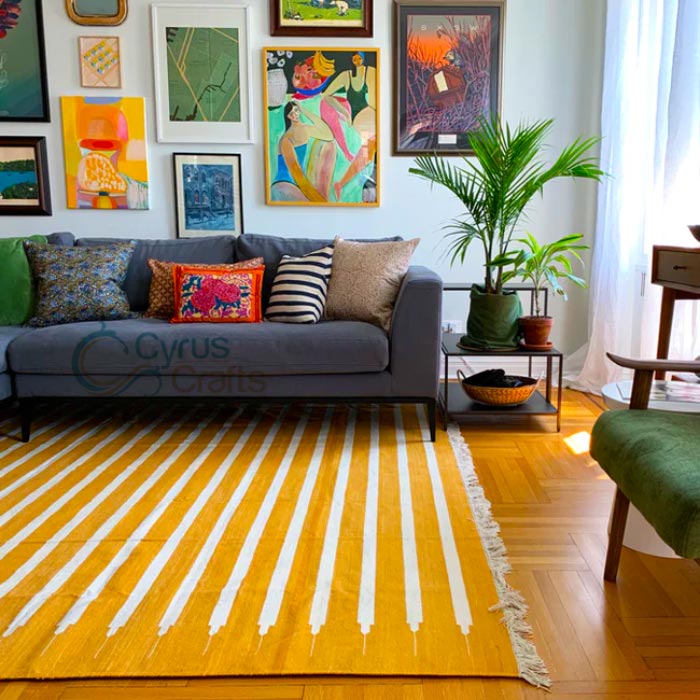
Patterns and Colors of Dhurrie Rugs
Traditional dhurrie themes include geometric designs, stripes, and mosque or minaret shapes. Modern styles incorporate designs such as floral or medallion patterns, chevrons or squares. Color-wise, older dhurries often used natural fiber colors as the background for the design, with dyes coloring the patterned fibers. Modern dhurries are sold in vast and vivid color varieties, although some rug makers still employ age-old fiber-dyeing methods.
Cyrus Crafts; Luxury & Unique Products
Different Sizes of Dhurrie Rugs
Dhurrie rugs have different sizes. Thus they can be used even as a cover for a vase or a telephone stand. 12″ by 12″ is the smallest dhurrie, while the largest may reach up to 20″ by 20″. Depending on what you want to use them for, you can choose different sizes.
What Materials Are Dhurrie Rugs Made of?
Four materials are commonly used to make them. These are cotton, wool, jute, and silk. First, the material is converted into threads which are then woven into shape.
Natural fiber colors are used to dye Dhurrie Rugs.
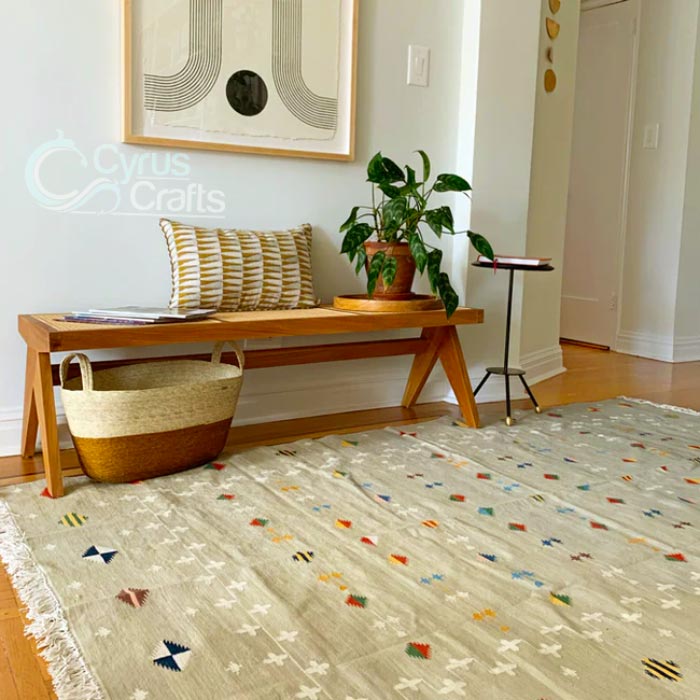
How to Clean Dhurrie Rugs?
Thick, flat-woven rugs keep less dirt and dust than thinner, more intricate carpets. Because they do not contain a deep pile to hide dirt, you must clean them often.
The dhurrie rugs must be cleaned with great care, as they are hand-woven and require special attention during their cleaning.
The delicate mix of materials and dyes makes it one step away from damage if cleaning is done recklessly.
To keep your rug clean, sweep it gently on both sides with a hand broom or handheld brush at least once a week to remove dirt.
The rug must be on a flat surface to obtain the most out of the brushing action. You must vacuum your rug at least once a week using a handheld vacuum.
A good vacuum cleaner can pick up dust without damaging the carpet fibers.
Both sides of the rug should be vacuumed. However, if your rug has a fringe, it is advised not to vacuum it as it may cause damage.
What Is the Difference Between a Kilim and a Dhurrie?
Dhurrie and kilim rugs were created in different regions before the 1970s; however, this is no longer the case. While dhurrie and kilim rugs differ geographically, they use very similar weaving techniques, are flat rugs, and are made of wool. As such, many sellers and even rug cleaners use the term kilim and dhurrie interchangeably.
Due to the use of natural dyes, traditional dhurrie rugs tend toward more natural, pastel tones with flowing, stylized patterns. Kilims, on the other hand, tended to have bolder geometric patterns. While those definitions are sometimes used to tell the difference between antique dhurrie and kilim rugs, modern rugs use these designs interchangeably.
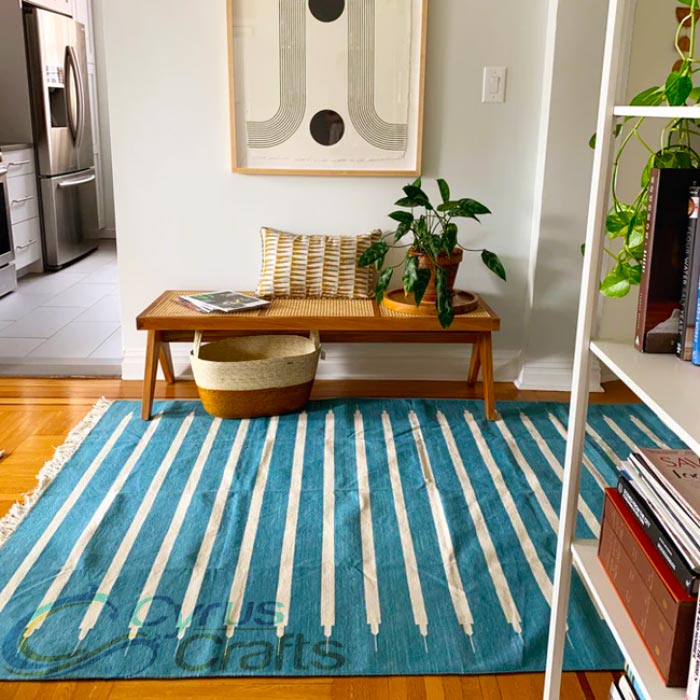
Finally, if you are looking for a handmade carpet with high durability, reasonable price, and originality, or you want to use more traditional motifs in your home, undoubtedly, one of the options you have come across during your research is the dhurrie.
A rug is one of the main elements of home decoration. Choosing the right carpet for any environment requires experience and knowledge of the arrangement.
Research is the most crucial step in buying the right carpet. To understand whether you want an Iranian carpet or a shaggy rug? Do you like a dhurrie rug or a Kilim? Is Gabbeh or silk carpet more suitable for you? Is your house style Canadian and American, or Asian? What carpet is suitable for each style of decoration? What are the differences and special features of each? What are the uses of each, and for which spaces are they more suitable?
CyrusCrafts Rugs Chain Store: Toronto, Ontario
CyrusCrafts NA is seriously pleased to show you the evolution of Persian rug chain stores in North America. The mission has always been to bring beauty and craftsmanship of the most exquisite Persian carpet to homes and offices and we are glad we have done this in several key locations.
Since we opened our store a couple of years ago, people who are interested in rugs and the arts in Toronto, Ontario have come to know us well. We offer an enormous stock of Persian rugs, Kilim rugs, runner rugs, and vintage rugs in Toronto that match every individual preference.
In this guide article, we talked about the introduction of dhurrie rugs, its features and a guide to choosing and buying it. We hope this article was helpful to you. You can share your thoughts with us in the comment section.





















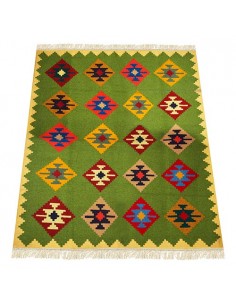

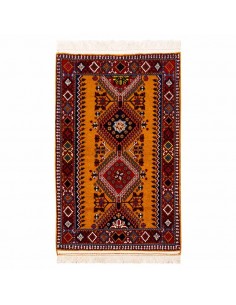

Comments (0)